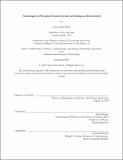| dc.contributor.advisor | David Kaiser. | en_US |
| dc.contributor.author | Webb, Claire Isabel. | en_US |
| dc.contributor.other | Massachusetts Institute of Technology. Program in Science, Technology and Society. | en_US |
| dc.date.accessioned | 2021-01-05T23:13:22Z | |
| dc.date.available | 2021-01-05T23:13:22Z | |
| dc.date.copyright | 2020 | en_US |
| dc.date.issued | 2020 | en_US |
| dc.identifier.uri | https://hdl.handle.net/1721.1/129021 | |
| dc.description | Thesis: Ph. D. in History, Anthropology, and Science, Technology and Society (HASTS), Massachusetts Institute of Technology, Program in Science, Technology and Society, September, 2020 | en_US |
| dc.description | Page 229 blank. Cataloged from PDF version of thesis. | en_US |
| dc.description | Includes bibliographical references (pages 217-228). | en_US |
| dc.description.abstract | Scientists in the late 1950s in the United States gained technological capabilities to test for signs of extraterrestrial life. While exobiologists developed visual techniques to detect whether sites beyond Earth might harbor microbes, "biosignatures," radio astronomers searched for extraterrestrial intelligence (SETI) in the form of "technosignatures." This dissertation explores how scientists since the Space Age have constructed experimental assemblages to imagine, relate to, and investigate the alien and exotic microbes -- unknown, indeed, as-yet-imperceptible, objects -- | en_US |
| dc.description.abstract | through familiar sensory metaphors of seeing (exobiologists) and listening (SETI scientists). From historical material gathered at various D.C. archives, the American Philosophical Society, and the National Library of Medicine, I show how exobiologists' technologies of vision rendered anew images of the Moon, Mars, Venus, and the Earth from afar and at surface, affording scientists the ability to conceptually anticipate relationships between their world and others. Through a epistemic pratice I call "gaze-scaling," they yoked the concept of "island" to "planet," casting extraterrestrial sites as fragile laboratories of life that beckoned exploration. I next draw from immersive participant observation since 2016 to engage ethnographic sonar on the SETI group Breakthrough Listen based at U.C. Berkeley, California. I analyze how they construct criteria of intelligence through "experiments of anticipation" that are parametrized to hear from a commensurable subject. | en_US |
| dc.description.abstract | I theorize "figures of listening" in both observational protocols and as a preemptive attunement to Other intention, acts that configure an alien who would be not just perceptible, but relatable. If exobiologists envisioned universal standards of biochemistry that would map life's common origins, SETI astronomers have traded on imagined superhuman characteristics of the alien -- more benevolent, wiser, and technologically superior -- to suggest human futures. I outline how the alien has been imagined through three potent analogical figures: as artifacts, animals, and angels. Furnished by feminist epistemologies and queer theories of care around multispecies becomings -- traditions that have persistently challenged ontological stability across species, gender, race, and spacetime -- | en_US |
| dc.description.abstract | I theorize those analogies as acts of "reflexive alienation": a mode of worldmaking in which scientists imagine Others imagining them. Future-oriented extraterrestrial objects held in abeyance cultivate Earthly concepts of being.. | en_US |
| dc.description.statementofresponsibility | by Claire Isabel Webb. | en_US |
| dc.format.extent | 229 pages | en_US |
| dc.language.iso | eng | en_US |
| dc.publisher | Massachusetts Institute of Technology | en_US |
| dc.rights | MIT theses may be protected by copyright. Please reuse MIT thesis content according to the MIT Libraries Permissions Policy, which is available through the URL provided. | en_US |
| dc.rights.uri | http://dspace.mit.edu/handle/1721.1/7582 | en_US |
| dc.subject | Program in Science, Technology and Society. | en_US |
| dc.title | Technologies of perception : searches for life and intelligence beyond Earth | en_US |
| dc.type | Thesis | en_US |
| dc.description.degree | Ph. D. in History, Anthropology, and Science, Technology and Society (HASTS) | en_US |
| dc.contributor.department | Massachusetts Institute of Technology. Program in Science, Technology and Society | en_US |
| dc.identifier.oclc | 1227095448 | en_US |
| dc.description.collection | Ph.D.inHistory,Anthropology,andScience,TechnologyandSociety(HASTS) Massachusetts Institute of Technology, Program in Science, Technology and Society | en_US |
| dspace.imported | 2021-01-05T23:13:21Z | en_US |
| mit.thesis.degree | Doctoral | en_US |
| mit.thesis.department | STS | en_US |
